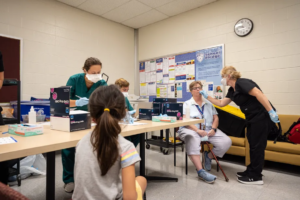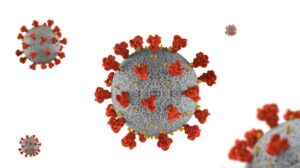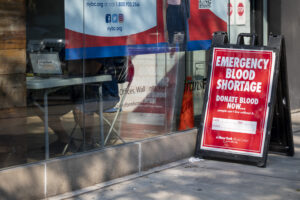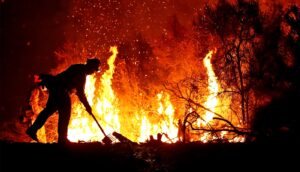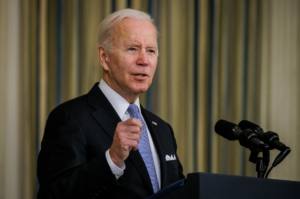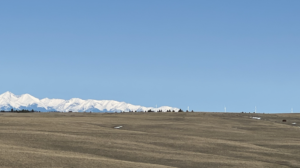First Tally of Virus Death Toll By Neighborhood Shows City Split in Suffering
5 min read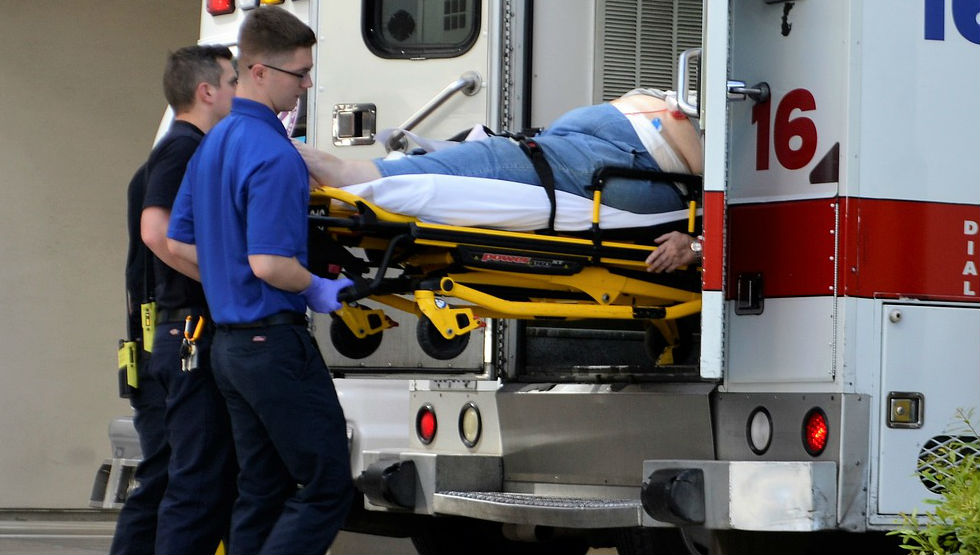
Coronavirus has claimed scores of residents in some neighborhoods while other areas have dodged death, statistics released Monday show — offering a stark split in the pandemic’s impact.
The ZIP code dominated by the Starrett City housing development in Brooklyn suffered the worst losses in the city compared to its population, losing 76 residents — equivalent to 612 deaths per 100,000 who live there.
Meanwhile, southern Battery Park City and the neighboring slice of Manhattan’s Financial District were the only two ZIP codes in the five boroughs to log zero fatalities.
The up-close neighborhood statistics cover the nearly 16,000 fatalities in the five boroughs confirmed through testing to be coronavirus-related, according to Department of Health and Mental Hygiene officials.
In Queens, COVID-19 exacted an especially heavy toll on the Rockaway peninsula — where Far Rockaway, Arverne and Rockaway Park recorded a combined 435 confirmed deaths to date.
City Councilmember Donovan Richards (D-Queens) broke down in tears upon hearing the death rate for these portions of his district, which each had at least 340 deaths per 100,000 people — nearly twice the citywide average of 175.
“There’s a lot more we could have done earlier,” said Richards, who has lost friends to the virus.
He described the Rockaway peninsula as a close-knit community with a high concentration of public housing and nursing homes — but with just one hospital and, until recently, little to no testing capability for COVID-19.
“There’s a lot more testing that should have been done earlier — on all levels of government — and the ramifications of a dismal federal government led by the president down to the state and city moving too slow led to the demise of these good folks,” he added.
“This is hard, man. These were good people. Just because they lived in poverty — they didn’t deserve this.”
Over 1,200 NYCHA Deaths
The new data also shows New York City Housing Authority’s residents dying at a higher rate than New Yorkers overall, accounting for nearly 6% of the city’s coronavirus fatalities. The Health Department reported 1,241 deaths from presumed or confirmed COVID among NYCHA residents, out of 20,761 such deaths citywide.
Using recent data from New York State, THE CITY reported that residents of ZIP codes with NYCHA developments are more likely than others to land in the hospital fighting the virus.
Officials with the Department of Health and Mental Hygiene, when counting COVID-19’s impact among NYCHA’s 326 developments, called it “proportionate to their representation of the city’s population.” There are about 366,000 NYCHA residents in a city of roughly 8.4 million people — or just over 4%.
That finding, they said, is based on the number of cases confirmed through testing: nearly 8,000 among NYCHA residents, out of 191,073 confirmed cases citywide.
Rena Marie Mungin, treasurer of the tenant association at Lincoln Houses in Harlem, says she’s not surprised her ZIP code — 10037 — recorded the highest death rate in Manhattan, with 63 confirmed fatalities.
Of those who died, seven lived in her housing development, the newly released figures show.
“The people here in the neighborhood, they have a whole lot of underlying issues,” including diabetes and high blood pressure, she said. “Those were the ones getting hit the hardest.”
Mungin’s grateful there haven’t been more deaths, but is worried about the future as the summer rolls around.
“I know they keep saying something about this second wave that’s going to hit. With it getting warmer and people not wearing masks and standing out just congregating together — I don’t know,” said Mungin, who has lived in her apartment for 52 years. “They’re just not listening.”
At the Linden Houses in East New York, Tawana Myers said three people in their 50s — including her lifelong friend — died over a three-week stretch last month in her building alone.
City figures show at least 71 confirmed cases and 13 COVID deaths at the large public housing development.
“This pandemic did a big thing to our community,” said Myers, 58. “It’s devastating.”
Toll of Poverty
In Queens, ZIP code 11369 in East Elmhurst also suffered heavy losses, with 150 residents gone — a death rate of 411 for every 100,000 people.
Local Councilmember Francisco Moya (D-Queens) said the new numbers underscore the city’s deep racial and socioeconomic disparities — and indicate the city government has done “too little, too late” to safeguard communities.
“Once again the very poor, the undocumented, they’re the ones that are going to suffer from this,” he added. “As someone born and raised in this community it makes you want to cry when you see these numbers. My people are dying and no one cares.”
Health officials said the new data solidifies prior evidence of racial and ethnic disparities in the virus’s impact — with black and Latino New Yorkers dying at roughly twice the rate of white New Yorkers, when adjusted for age.
The administration of Mayor Bill de Blasio in late April began ramping up its testing and public messaging efforts in high-poverty neighborhoods that have been among those hardest hit by the outbreak — including through social media in two dozen languages.
The effort includes a plan to help community-based medical centers with telemedicine and billing.
“This public health emergency has affected all of our communities,” said Health Commissioner Dr. Oxiris Barbot. “The data also show that this virus is not hitting New Yorkers equitably and that reality is guiding the COVID-19 response.”
Asked about the data on NY1 late Monday, de Blasio called the disparities “horrible.”
“What we’re talking about here is the really painful, really unfair history of race and class in this city and in this country,” he said.
The mayor cited the city’s work to secure insurance or medical care for all its residents to address the preconditions associated with poor COVID outcomes — which include diabetes, hypertension and compromised immune systems.
“These are things that obviously get back again not just to racial disparity but to economic disparity — to folks who never got the health care they deserved because they didn’t have the money they deserved,” de Blasio said.
Elected officials have argued that access to testing has not been equitable across neighborhoods, and a number of them said they’d been pushing City Hall to release more specific data on deaths sooner.
Councilmember Inez Barron (D-Brooklyn), who represents Starrett City, said her district was left to suffer for weeks as she pleaded with the mayor’s office to release more details about neighborhood impacts of the virus.
“Why aren’t residents — which is the hotbed for this disease — why aren’t these people being tested? It’s illogical to me,” she said.
“They know that senior concentrations, and black and brown communities and other areas are hotbeds, but yet you don’t make provisions in the very areas where we see the numbers soaring.”
The article was published at First Tally of Virus Death Toll By Neighborhood Shows City Split in Suffering.

